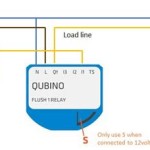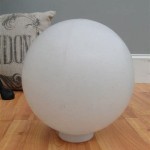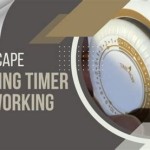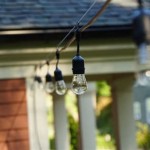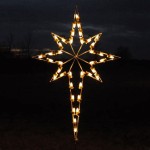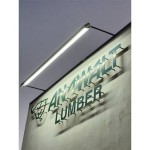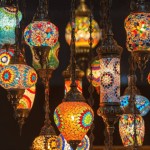Outdoor Light Box Signs: Illuminating Your Business Identity
Outdoor light box signs represent a popular and effective advertising solution for businesses across various sectors. These signs, known for their visibility and durability, serve as a powerful tool for attracting customers and reinforcing brand recognition, particularly during nighttime hours or in dimly lit environments. The construction, design, and maintenance of outdoor light box signs involve several key considerations that impact their overall performance and longevity.
A light box sign is essentially a backlit display, typically composed of a frame, a translucent face (often made of acrylic or polycarbonate), and an internal illumination system. The graphic, which displays the business logo, name, or promotional message, is printed or applied to the face. The internal light source, traditionally fluorescent lamps but increasingly LEDs, illuminates the graphic from behind, making it highly visible to passersby. The design and materials used in the construction of outdoor light box signs are carefully selected to withstand the rigors of outdoor weather conditions.
Key Point 1: Materials and Construction of Outdoor Light Box Signs
The choice of materials is critical in ensuring the durability and weather resistance of an outdoor light box sign. The frame, typically constructed from aluminum or steel, provides structural support and protects the internal components from the elements. Aluminum is favored for its lightweight nature, corrosion resistance, and ease of fabrication. Steel, while heavier, offers greater strength and is suitable for larger signs or those exposed to high winds.
The sign face, the visible portion displaying the graphic, is usually made from acrylic or polycarbonate. Acrylic offers excellent clarity and is easy to print on, making it a cost-effective option for many businesses. Polycarbonate, while more expensive, is significantly more impact-resistant, making it a better choice for areas prone to vandalism or severe weather. Both materials are available in various thicknesses and colors, allowing for customization to suit specific design requirements.
The internal illumination system is a crucial component of the light box sign. Traditionally, fluorescent lamps were used due to their relatively low cost and widespread availability. However, LEDs (Light Emitting Diodes) are rapidly becoming the preferred choice due to their superior energy efficiency, longer lifespan, and brighter, more consistent light output. LED technology also offers greater design flexibility, allowing for dynamic lighting effects and easier maintenance. The LEDs are typically arranged in a grid pattern or along the edges of the sign to ensure even illumination across the entire face.
Weatherproofing is a critical consideration in the construction of outdoor light box signs. The frame must be sealed to prevent water ingress, which can damage the electrical components and degrade the graphic. Gaskets, seals, and weatherproof adhesives are used to create a barrier against rain, snow, and humidity. The electrical components, including the power supply and wiring, must also be rated for outdoor use and protected from moisture. In coastal areas, salt spray can accelerate corrosion, requiring the use of marine-grade materials and coatings.
Fabrication techniques play a significant role in the quality and longevity of the sign. Precision cutting and welding ensure a structurally sound frame, while accurate graphic application guarantees a professional appearance. High-quality printing, using UV-resistant inks, prevents fading and discoloration of the graphic over time. Proper assembly and wiring are essential for safe and reliable operation. The entire construction process should adhere to relevant safety standards and building codes.
Key Point 2: Design Considerations for Effective Outdoor Light Box Signs
The design of an outdoor light box sign is a critical factor in its effectiveness as an advertising tool. A well-designed sign will capture the attention of passersby, communicate the business's message clearly, and reinforce brand identity. Several key design considerations should be taken into account, including size, color, typography, and graphics.
The size of the sign should be appropriate for the location and viewing distance. A larger sign will be more visible from afar, but it must also comply with local sign regulations and fit appropriately within the surrounding environment. The viewing angle and traffic speed should also be considered when determining the optimal size. A sign intended to be viewed by motorists traveling at high speeds needs to be larger and bolder than a sign intended for pedestrians walking along a sidewalk.
Color plays a significant role in attracting attention and conveying emotion. Bright, contrasting colors are more likely to stand out, but they should also be consistent with the brand's identity and target audience. Color psychology can be used to select colors that evoke specific feelings or associations. For example, blue is often associated with trust and reliability, while red is associated with excitement and energy. The color palette should be carefully chosen to create a visually appealing and memorable sign.
Typography is another critical element of sign design. The font should be legible and easy to read from a distance. Simple, sans-serif fonts are often preferred for outdoor signs, as they tend to be more readable than ornate or decorative fonts. The font size should be large enough to be seen from the intended viewing distance. The letter spacing and line height should also be carefully considered to ensure readability. A well-chosen font can enhance the overall impact and professionalism of the sign.
Graphics, including logos and images, should be clear, concise, and relevant to the business's message. High-resolution images are essential for ensuring a sharp and professional appearance. The graphics should be scaled appropriately to fit the sign face without appearing distorted or pixelated. The placement of graphics should be carefully considered to create a balanced and visually appealing composition. Overcrowding the sign with too many graphics can detract from its effectiveness.
Contrast is essential for readability, especially at night. The background color should contrast strongly with the text and graphics to ensure that they stand out. White text on a dark background is often a highly effective combination, but other color combinations can also work well, depending on the overall design and branding. The brightness of the internal illumination should be adjusted to provide optimal visibility without being too glaring or distracting.
Key Point 3: Maintenance and Longevity of Outdoor Light Box Signs
Regular maintenance is crucial for ensuring the longevity and optimal performance of outdoor light box signs. Neglecting maintenance can lead to reduced visibility, electrical problems, and ultimately, the need for costly repairs or replacements. A proactive maintenance program should include regular cleaning, inspection, and repair of any damage.
Cleaning is essential for removing dirt, dust, and grime that can accumulate on the sign face and reduce its brightness. The frequency of cleaning will depend on the environment, with signs in urban areas or near industrial sites requiring more frequent cleaning than those in rural areas. A mild detergent and soft cloth should be used to avoid scratching or damaging the sign face. Pressure washing can be used for larger signs, but care should be taken to avoid damaging the electrical components or seals.
Regular inspection is important for identifying potential problems before they become major issues. The frame should be inspected for signs of corrosion or damage, and any necessary repairs should be made promptly. The electrical components should be checked for loose connections or frayed wires. The sign face should be inspected for cracks, scratches, or fading. The internal illumination system should be checked to ensure that all lamps or LEDs are functioning properly. Any damaged or non-functioning components should be replaced as soon as possible.
Repairing any damage promptly is crucial for preventing further deterioration. Small cracks in the sign face can be repaired with epoxy or other suitable adhesives. Damaged electrical components should be replaced by a qualified electrician. Faded or damaged graphics can be replaced with new prints. Addressing these issues early on can prevent more extensive and costly repairs in the future. Professional sign companies can provide maintenance and repair services to ensure that the sign is kept in optimal condition.
Protecting the sign from vandalism is another important consideration. Security measures such as cameras or security lighting can deter vandals. Anti-graffiti coatings can make it easier to remove graffiti from the sign face. Using polycarbonate instead of acrylic for the sign face can also reduce the risk of damage from vandalism. Installing the sign in a well-lit and visible location can also help to deter vandalism.
Energy efficiency is an increasingly important consideration for businesses. Switching to LED lighting can significantly reduce energy consumption and lower operating costs. LED lights also have a much longer lifespan than traditional fluorescent lamps, reducing the frequency of replacements. Using a timer or photocell to control the sign's illumination can also help to conserve energy by automatically turning the sign on and off at appropriate times. By implementing these measures, businesses can reduce their environmental impact and save money on their energy bills.
Proper installation is also vital for the longevity of the sign. The sign must be securely mounted to a sturdy structure that can withstand wind loads and other environmental stresses. The electrical wiring must be properly installed and grounded to prevent electrical hazards. A qualified installer should be used to ensure that the sign is installed correctly and safely. Compliance with local building codes and sign regulations is essential. Regular inspections by a qualified professional can help identify any potential issues related to the installation and ensure that the sign remains safe and secure.
Outdoor Light Box Signs

Aluminum Light Box Signs Outdoor Advertising Led Signage Lindo Sign

Lightbox Signs Now

Square Light Box Signs Outdoor Led Lightbox For Wall

How Much Does A Lightbox Signs Costs In 2024

Customer Design Scrolling Led Light Box From China S Adhaiwell

Led Light Box Signages Wall Mount Projecting Sign Lindo

Outdoor Light Box Sign Whole Illuminated Lightbox

Outdoor Use Street Advertising Light Box Signs Board Display China Waterproof Stand Made In Com

Light Box Signs For Churches Schools More Stewart
